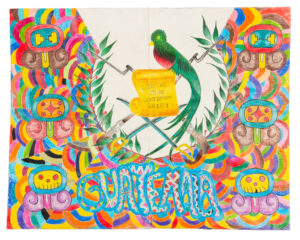![]()
In his book Myth and Reality, the late scholar of religion Mircea Eliade suggests that, contrary to the popular understanding of myth as a fiction, in early religious practice it defined both the constitution and understanding of reality—a line that defines the limits of belief or a wall that defines a city.
Myth tells of the original time that constitutes the world, and thus history becomes an effort to “go back,” to recreate reality in its pristine form through ritual and the recitation of the origin story.
Eliade’s writing made a big impact on me. When I first visited the medieval walled cities of Tuscany, each expanding outward from the central cathedral, I understood those cities as representing the original myth of Christianity.
In the medieval mind, reality radiated from the city’s center to its walls, beyond which other forces—chaos, dissolution—threatened. In the medieval city, gates, openings to those disintegrating forces, required constant vigilance.
When I rode around my neighborhood, looking at the houses and the fenced yards, I imagined each fenced space as a world unto itself, thousands of competing “realities” connected loosely to the larger reality of the city, the state, the country, each with its own boundaries.
Later, I came across Robert Frost’s line from “Mending Wall.” “Something there is that doesn’t love a wall,” the poem opens. In his telling, I thought of Frost as creating a modern myth, in Eliade’s sense of “reality.”
Frost writes of the “gaps” in his stone fence that no one has seen or heard made, but which are there nonetheless, some so wide as to allow two abreast to pass. As he and his neighbor mend their walls in the spring, his neighbor says “Good fences make good neighbors.”
The mischievous poet wants to know “Why do they make good neighbors?” Before building a wall, he says, he might want to know “What I was walling in or walling out.” But the neighbor remains mute, except, with “a stone grasped firmly by the top / In each hand, like an old-stone savage armed,” to repeat what he has learned from his father: “Good fences make good neighbors.”
The neighbor holds on to the reality learned in his original time, from his father, not knowing, or caring, why he says what he says, only believing it to be true because it came from the time of his origin.
In the last four or five years, we heard ad nauseum the infamous call to “build that wall.” Few who made the call, however, thought to ask why. “What are we walling in and walling out?” Still, the cry became, in its way, a call to “go back” to a supposedly golden age, when the real could be distinguished from the threatening forces of perceived chaos. The wall necessary, presumably, to keep those forces corralled.
Among the loudest of those who shouted were those who identified themselves as “Christian.” They sought (and still seek) to retrieve, to go back to, a view of a nation wholly composed of like-minded people.
During the yelling and the ugliness, I came across the quiet, sane, voice of Marilynne Robinson. Robinson has a different take on the Christian myth. In her essay “The Awakening” from The Givenness of Things, she writes: “‘Christian’” now is seen less as identifying an ethic, and more as identifying a demographic.… History has shown us a thousand variations on the temptations that come with tribalism, the excitements that stir when certain lines are seen as important because they can be rather clearly drawn.”
The neighbor in Frost’s poem, like the “Christian” in Robison’s essay, draws lines, builds walls to define a reality that separates “us” and “them,” neighbor from neighbor, never thinking to ask why the wall is necessary in the first place.
I’d like to think that when Frost imagined the gap large enough for two abreast to pass, the two that passed might have been the neighbors themselves—us and them—celebrating a passage from fear into community.
Eddie Dupuy will be moving to Tacoma from San Antonio, Texas next summer as part of a family migration.

Be First to Comment